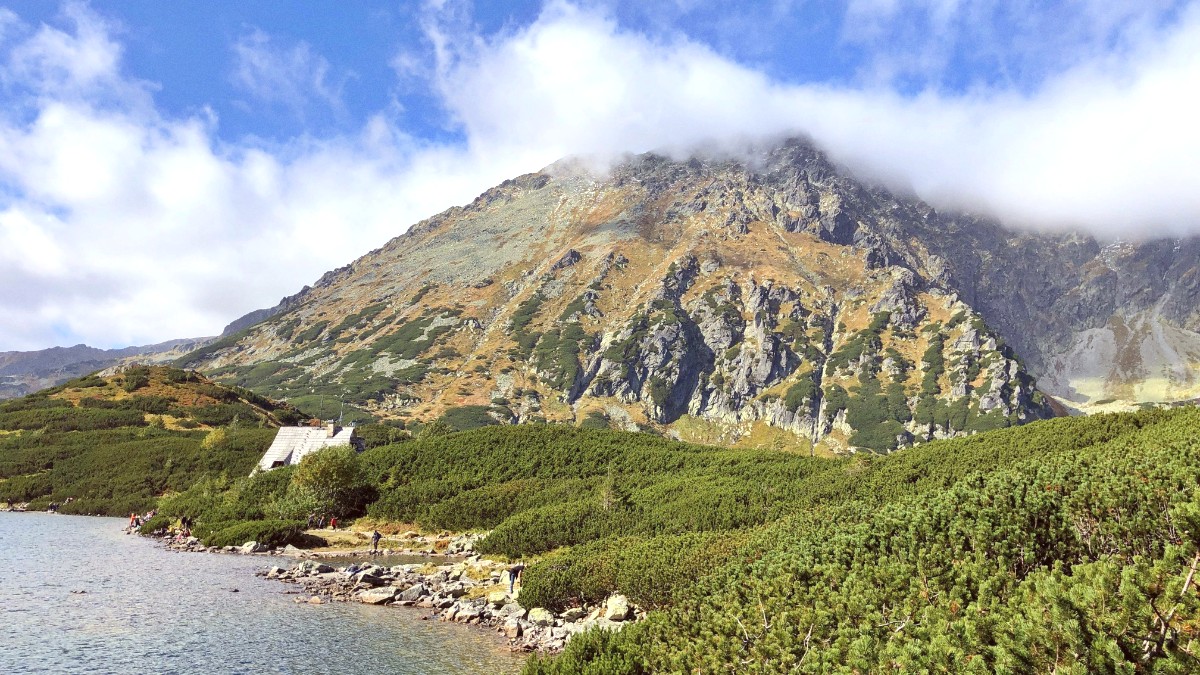
Malopolska, Poland
Zakopane features several instantly recognizable landmarks that define the town and its surroundings, drawing numerous visitors.
From bustling streets to mountain peaks, these sites showcase the region's diverse appeal.
Consider walking down the hill for a different perspective and to explore surrounding trails.
A major venue for international competitions, including the FIS Ski Jumping World Cup.
A symbol of Zakopane's prominent winter sports heritage.
Visit the hill and ascend to the top (by stairs or a small chairlift) for a jumper's perspective.
A small entry fee (approximately 10-15 PLN) applies.
Check the event schedule if interested in witnessing a competition.
Zakopane's museums offer deep insights into the region's natural history, unique culture, and artistic movements.
The principal museum in Zakopane, focusing on the natural history, ethnography, and culture of the Tatra Mountains and Podhale region.
Exhibits cover geology, flora, fauna of the Tatras, Highlander culture, traditional costumes, folk art, and Zakopane style history.
Open Tuesday to Sunday. Entry fee is approximately 15-20 PLN. Allocate 1-2 hours for a thorough visit.
The first house built in the distinctive Zakopane Style (1893), designed by Stanisław Witkiewicz.
Showcases his architectural vision and the regional applied arts that defined this unique aesthetic movement.
Explore original interiors, furniture, and decorative items that embody the Zakopane style.
An open-air museum (Skansen w Kościelisku) displaying traditional Highlander wooden architecture, featuring relocated historic buildings.
A historic cemetery with unique wooden gravestones, final resting place for prominent Polish artists and figures.
Several beautiful historic wooden churches in and around Zakopane, examples of traditional regional architecture.
Zakopane's historical sites offer a window into its past, from humble beginnings to its growth as an artistic and spiritual center.
The Tatra Mountains themselves are Zakopane's greatest natural attraction, with breathtaking landscapes and diverse recreational opportunities.
Poland's highest mountain range, with stunning landscapes, flora, fauna, and an extensive network of hiking trails.
Modern thermal spa complexes in the Zakopane area, utilizing geothermal waters for relaxation and recreation.
The largest and most famous lake in the Polish Tatras, renowned for its crystal-clear waters and surrounding peaks.
A picturesque valley with easy walking trails, accessible caves (Jaskinia Mroźna, Smocza Jama), and scenic limestone formations.
Explore Valley ToursThe longest valley in the Polish Tatras, noted for its spectacular spring crocus blooms (late April/early May) and traditional shepherd huts.
View Spring BloomsAn iconic peak overlooking Zakopane, with a prominent cross at its summit. A popular but challenging hiking destination.
Climb to the CrossMany caves exist within the park, with some accessible to tourists (e.g., Mroźna Cave). Check opening times and conditions prior to visiting.
Discover Cave SystemsAn entry fee is required to enter the park (approx. 9 PLN daily). Remain on marked trails, do not pick plants, and do not feed wildlife.
Get Park TicketsSeveral complexes are located in the Zakopane area, utilizing geothermal waters from the mountains.
An UNESCO Biosphere Reserve, emphasizing conservation.
Bring sturdy hiking boots, layered clothing (including waterproof rain gear), a map, water, and snacks.
Hiking poles are recommended for stability and reducing knee strain on descents.
Venture beyond the main tourist circuit to discover Zakopane's less crowded, equally rewarding spots.
One of the oldest inns in Zakopane, this traditional karczma features authentic Highlander food and atmosphere.
A scenic walking path located just below the Tatra National Park boundary.
This beautiful wooden chapel, designed by Stanisław Witkiewicz, is a masterpiece of Zakopane style architecture.
A quiet, contemplative space worth visiting.
During spring and summer, locate a small, active bacówka in a quieter valley. These traditional huts produce fresh oscypek.
These visits forge a direct connection to the region's agricultural heritage.
This museum presents the former home of Jan Kasprowicz, a famous Polish poet who spent many years in Zakopane.
Inquire locally for directions to active huts and museum hours.
Located in Krzeptówki, a place of spiritual significance with stunning views.
Trails connected to Pope John Paul II's visits to Zakopane, offering both nature and history.
Smaller galleries outside Krupówki showcase contemporary and traditional local art.